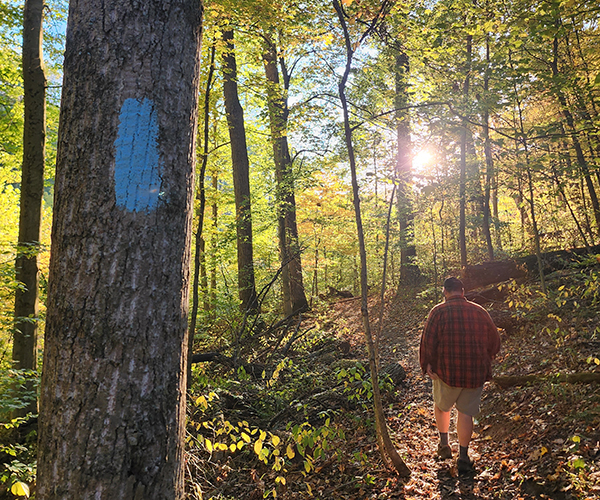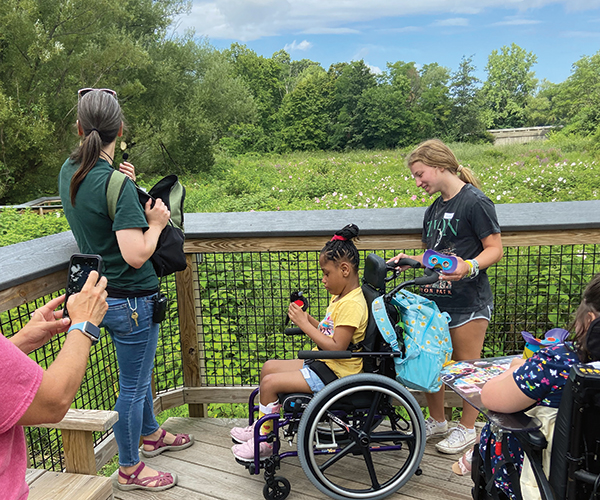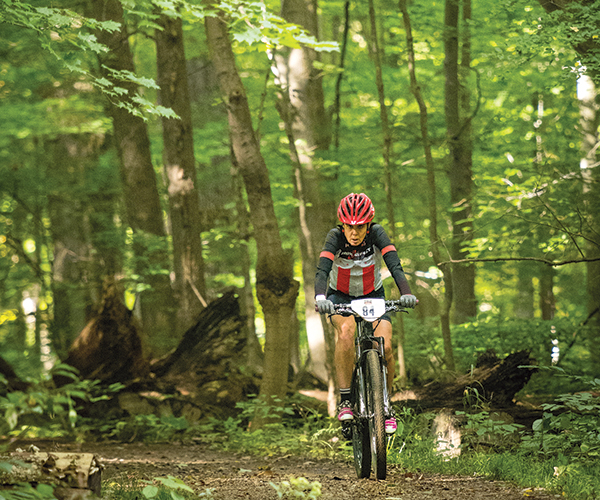Fifty feet ahead of me, a lone male elephant is striding toward the truck I share with five fellow travelers. “Sit down and don’t move,” our safari guide leans back to whisper from the driver’s seat. Is that anxiety I hear in his voice?
I plop down and excitedly snap another photo through the windshield. My heart starts pounding, however, when I realize the elephant has no intention of slowing down or changing course. He’s heading right for us!
I can’t tell if I’m just excited to see this creature, or if I have some kind of internal alarm sounding out a warning that he truly has the power to kill me. The two-way radio buzzes softly in the background as static mixes with animated Swahili chatter. A few minutes ago, he “mock-charged” one of the other trucks in our group by rapidly approaching the truck, head held high and ears out, intentionally stopping just short of crashing into it. The guides are recounting the interaction over the radio, but since I don’t speak Swahili, I have no idea. We sit perfectly still as he approaches.
The elephant pauses alongside our truck, drops his head and looks directly into the side window of our Land Cruiser. I’m eye-to-eye and roughly 6 feet away from a 5-ton, 10-foot-tall animal with 3-foot-long tusks. Adrenaline rushing through my veins, I can only imagine how Marjorie, another group member, is feeling: She’s on his side of the truck, just 3 feet away from him. The side windows are open and the removable tops of the truck are strapped back so we can stand up, but now is certainly not the time for a closer look.
I’m not moving, but my mind’s racing — I knew I should’ve read more of that safari guidebook before I left home. I try to reconstruct the few bits I can remember: You’re not supposed to look right into the eye of a gorilla. That doesn’t help me — there aren’t any gorillas here in Tanzania’s Lake Manyara National Park. I don’t anticipate seeing them during my week here, nor once we cross the border to the north for a week near the equator in Kenya — Africa’s gorillas are usually found farther west in the country of Uganda. Meanwhile, nothing about elephants is coming to mind.
But as I stare at him, my fear gives way to fascination. His dark eyes, framed by long, thick lashes, stare inquisitively back at me. His weathered hide is encrusted with dried mud, and one rough-edged ear has a perfectly round hole that looks as if it’s been pierced by another elephant’s tusk. He’s beautiful.
After what feels like an eternity — just a few seconds in real time — the elephant lifts his head and saunters off down the road.
“That’s the closest you’ll ever get to an African elephant and live to tell about it,” our guide tells us. “I had you sit down because if he were to swipe his head over the truck as you were standing, you could be killed.” He turns the key, and off we go. It’s late afternoon on my first day on a real African safari, and already I’ve come face-to-face with a bull elephant. I can’t wait to see what’s in store for the rest of my trip.
Over the next few days, I realize that the tour guides are a crucial part of the safari experience. I’m continually amazed at their uncanny ability to spot hidden wildlife, and their breadth of knowledge on everything Africa: the flora, fauna, climate, countryside, animals and local people.
Plus, they do it all while zipping at high speed along the dirt roads, swerving to avoid massive potholes and crossing animals. Each guide is knowledgeable but has a different specialty, so our group leader, Bruce Latimer, executive director of the Cleveland Museum of Natural History, suggests that we ride with a different guide each time we go out on a game drive to gain a variety of perspectives.
Latimer’s knowledge of East Africa is equally indispensable. In 1995, he studied an area in the Great Rift Valley known as Laetoli, a site where evidence of early hominid footprints was discovered. Our tour group visits the site and Latimer shares anecdotes about how this and other discoveries were made, how the site’s discovery has impacted science and funny stories about the people he worked with that would never make it into a school history book.
This relaxed approach typifies the whole experience: Our downtime is spent at a “luxury tented campsite” that makes roughing it easier than I ever imagined it could be. We’re spoiled with hardwood furnishings, in-suite bathrooms with marble washstands and electricity powered by the camp’s generator. Our wake-up calls take the form of a staff member cheerfully announcing “wake-up call!” while dropping off a morning beverage of choice on our veranda. At some campsites, I realize there’s really no snooze button here — if I don’t get my tray immediately, a vervet monkey is likely to snatch up my biscuits or morning croissant.
Our time on safari is distributed between seeing wildlife and exploring the area culture. Whether chatting with the animal keepers at the William Holden Wildlife Foundation, located at the Mount Kenya Game Ranch, learning about the daily lives and challenges of the pastoral Maasai and Samburu tribes through visits to their villages or studying the wood carvings and paintings on display at the Cultural Heritage Centre in Tanzania, I find there is always someone eager to share their knowledge and passion for Africa.
The extremes of this foreign land stun me as much as its diversity. During the trip, I witness dust storms blasting across Amboseli National Park. I stand in the shadow of Mount Kilimanjaro and walk in the footsteps of women fetching water at Lake Victoria. I lose myself in the frenetic bustle of downtown Nairobi, in Kenya. The word “safari” is Swahili for “journey,” and that’s exactly what I’ve experienced. I came here expecting to see various African animals in the wild, but found that the people and the pulse of the vibrant countries we encountered were what made my visit extraordinary.
If you want to go
The Cleveland Museum of Natural History has teamed up with the Cleveland Zoological Society, Cleveland Metroparks Zoo and the Cleveland Botanical Garden to offer group trips to various destinations, each escorted by a member of one of the organizations. The next preview night is June 14 at the Cleveland Museum of Natural History; there, you’ll learn more about the trips slated for this year and next.
2006 Trips
May 20-28: London’s Chelsea Flower Show and Garden Tour
Aug. 19-Sept. 2: Tanzanian elephant safari — “Safari Ndovu”
Oct. 6-14: Galapagos with Machu Picchu extension
Oct. 6-16: Kenyan safari
Oct. 28-Nov. 16: Gardens and game of South Africa
Tentative Destinations for 2007
February: Peruvian Amazon
March: Japanese gardens
April: Orangutans of Malaysia
June: China
July: Kenyan teachers tour
August: Mountain gorillas of Uganda
October: Madagascar
Great Lakes Options
Italiano, eh?
Discover proof that Italian art goes far beyond Michelangelo and da Vinci without having to leave the continent. The Montreal Museum of Fine Arts will host “Il Modo Italiano: Italian Design and Avant-garde in the 20th Century” from May 4 to Aug. 27 at the Jean-Noël Desmarais Pavilion. The exhibition features 450 works that define the philosophical, economic and aesthetic discourse in Italy over the last 120 years. Pieces include furniture, ceramics, paintings, photographs, sculpture, jewelry, fashion and architecture. For more information visit www.mmfa.qc.ca.
All Aboard!
Step into the shoes (or bare feet) of a runaway slave at the Kelton House Museum & Garden during the Civil War re-enactment Trails of Hope. Tales of real slaves sheltered at the Kelton House “depot” of the Underground Railroad and period songs complete the visit. Trails of Hope performances begin at 2 p.m. and 3 p.m. May 14 and June 11. Tickets are $5 for adults, $4 for senior citizens and $2 for children age 6 and older. For more information, contact the Kelton House Museum & Garden located at 586 E. Town St. in Columbus at (614) 464-2022 or visit www.keltonhouse.com.



